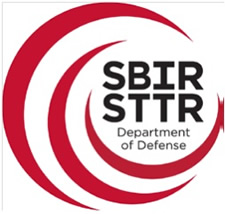Advanced Research
Small Business Innovation Research (SBIR) / Small Business Technology Transfer (STTR) Programs
 Advanced Research administers MDA's Small Business Innovation Research (SBIR) and Small Business Technology Transfer (STTR) programs, which are the fourth largest in the Department of Defense. The agency's focus for the SBIR and STTR programs is to pursue technologies that could spur a revolutionary leap or enhancement, decrease the time required to transform them into actual applications for insertion into the Ballistic Missile Defense System, and benefit from commercialization of the technology. MDA system elements submit research topics that are applicable to the needs of the BMDS. Radar and Electro-optic Sensors, Manufacturing, Materials Development, Modeling and Simulation, Command and Control, and Propulsion are all example topics.
Advanced Research administers MDA's Small Business Innovation Research (SBIR) and Small Business Technology Transfer (STTR) programs, which are the fourth largest in the Department of Defense. The agency's focus for the SBIR and STTR programs is to pursue technologies that could spur a revolutionary leap or enhancement, decrease the time required to transform them into actual applications for insertion into the Ballistic Missile Defense System, and benefit from commercialization of the technology. MDA system elements submit research topics that are applicable to the needs of the BMDS. Radar and Electro-optic Sensors, Manufacturing, Materials Development, Modeling and Simulation, Command and Control, and Propulsion are all example topics.
The MDA SBIR/STTR process has three phases. In Phase-I, companies apply for a seven-month award to test the scientific, technical, commercial feasibility of a particular concept. All companies who receive a Phase-I award are allowed to propose a two-year Phase-II project to further develop the concept, usually to the prototype stage. Phase-III is the commercialization and transition phase of the process. Once the company completes Phase-II there is an expectation on the company to obtain funding from the private sector and/or non-SBIR government sources to develop the concept into a product for sale in the private sector and/or military markets.
While STTR has the same objectives as SBIR regarding the involvement of small businesses in federal research and development and the commercialization of innovative technologies, the STTR program requires teaming with universities, federally funded research and development centers (FFRDCs), or other non-profit research institutions.
For additional information on MDA SBIR and STTR opportunities and procedures, please review the following brochures:
Learn more by clicking the links below.